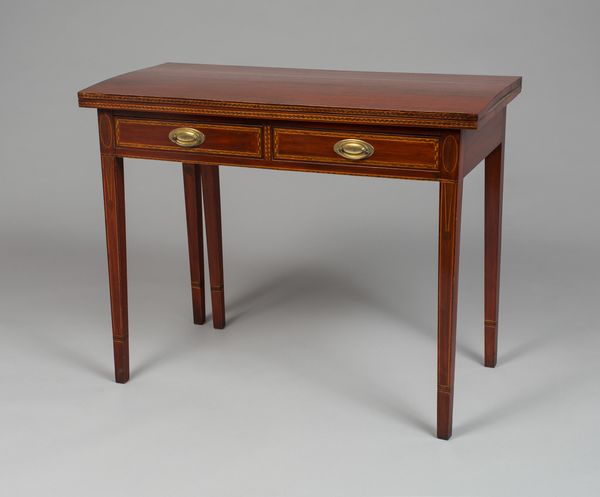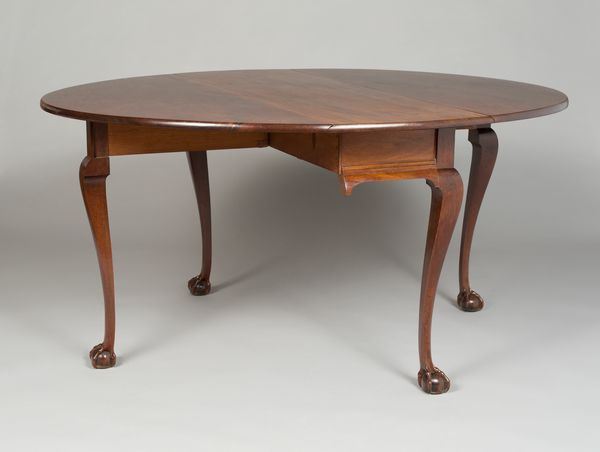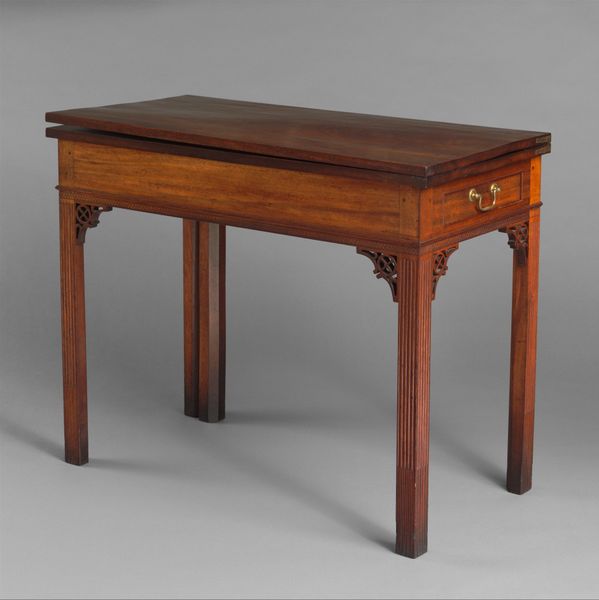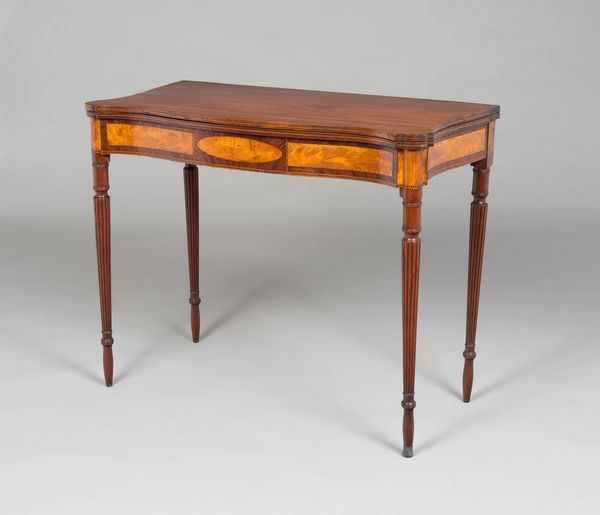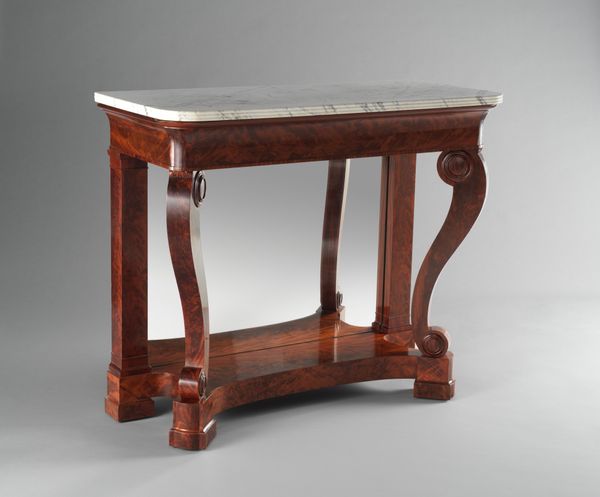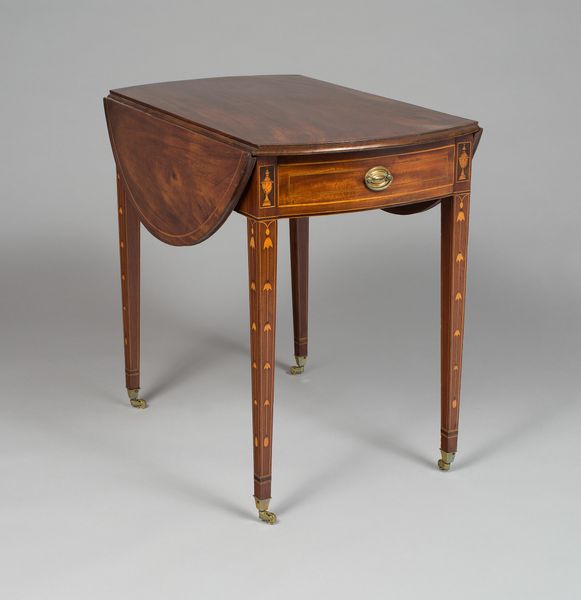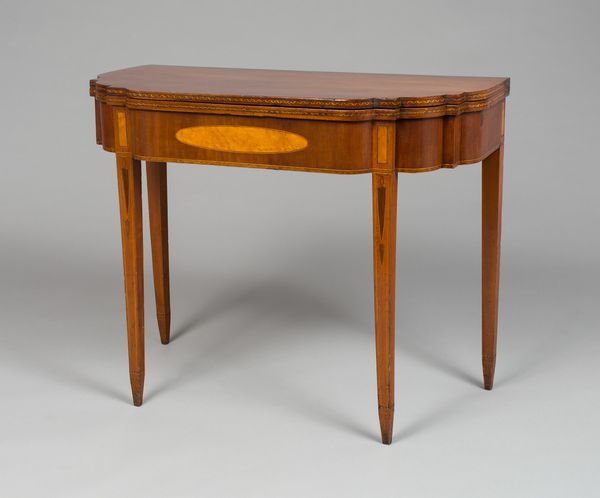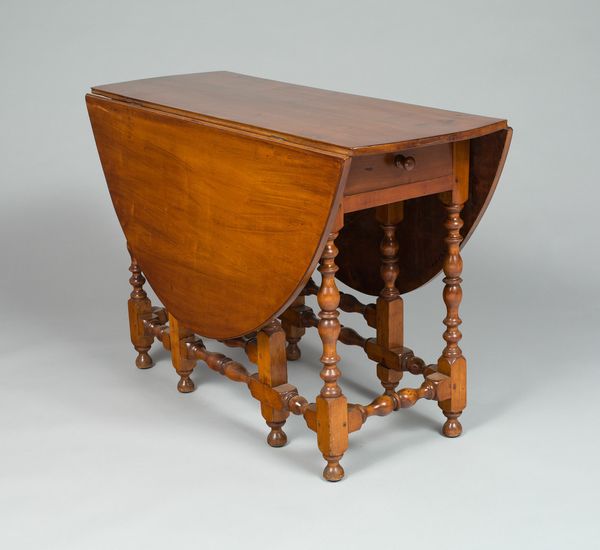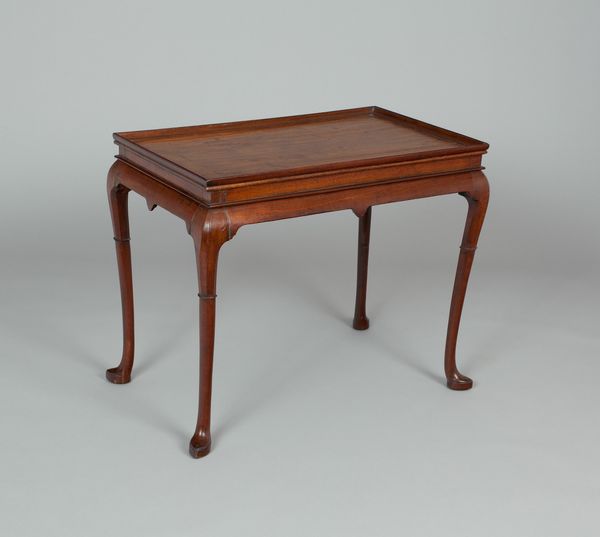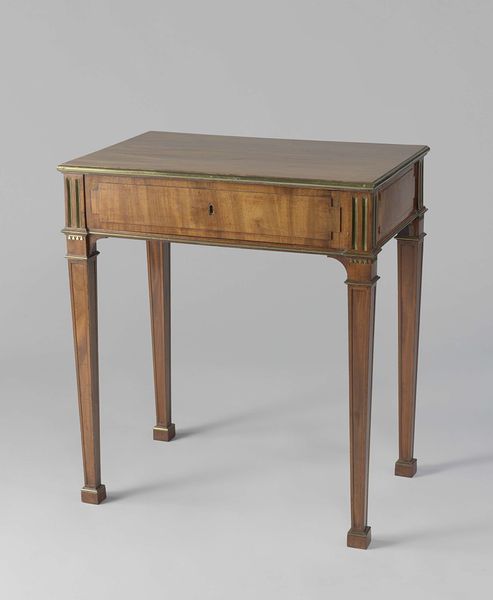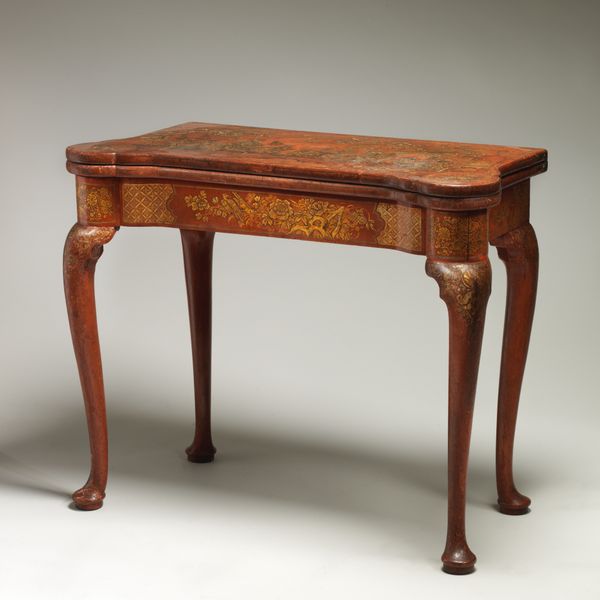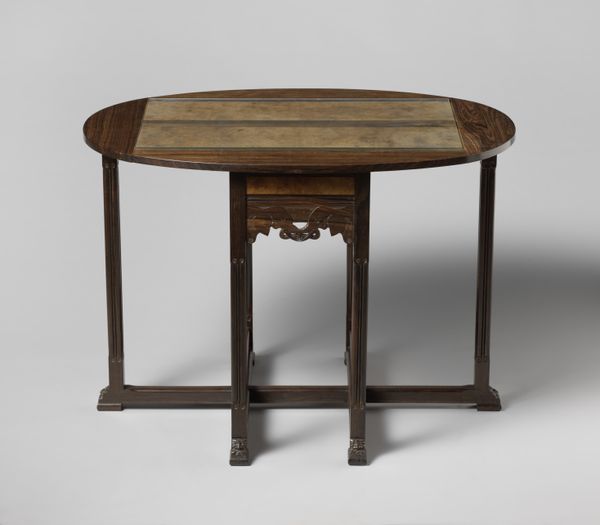
Dimensions: 70.2 × 101.6 × 75.6 cm (27 5/8 × 40 × 29 3/4 in.)
Copyright: Public Domain
Editor: We’re looking at “Table,” crafted by Herter Brothers between 1885 and 1895, currently housed at the Art Institute of Chicago. It’s made of wood, and what strikes me is how the legs seem to tell a story. They’re quite ornate at the top and bottom, especially compared to the simple tabletop. What do you see in the construction of this table that might be interesting to our listeners? Curator: This is a curious specimen of late 19th-century design. If we examine it purely from a formal perspective, consider the interplay between the planar surface of the tabletop and the almost Baroque articulation of the legs. Note how the carver has employed relief to activate the surface of each leg. Are these not vegetal motifs climbing upward, almost fighting against the orthogonal logic of the design? Editor: That contrast is definitely there! It’s like the top is saying "function," and the legs are whispering "romance." Curator: Precisely. Let’s consider the finish, as well. What is its relation to the piece’s overall function? Do you see it as emphasizing the object's utilitarian nature, or perhaps highlighting the materials of which the object is composed? Editor: I'd say it enhances the beauty of the wood itself, with its grain and warm tone, so it makes the tabletop into a feature and contributes a luxurious element to an otherwise straightforward piece of furniture. The contrasting finishes on the legs really exemplify that idea, as well. Curator: Indeed. In its time, a piece such as this would certainly have spoken of careful craftsmanship, achieved using sophisticated technologies that allow one to celebrate the material while refining it to its ideal form. What do you make of this approach? Editor: I can see that contrast you mention. Analyzing it from a structural perspective really makes you appreciate the skill in harmonizing these distinct design components. It changes how you perceive what might seem like a basic piece of furniture at first glance. Curator: Yes, observing the relation between components offers insights to design principles and perhaps even cultural priorities during the moment of its creation.
Comments
No comments
Be the first to comment and join the conversation on the ultimate creative platform.
